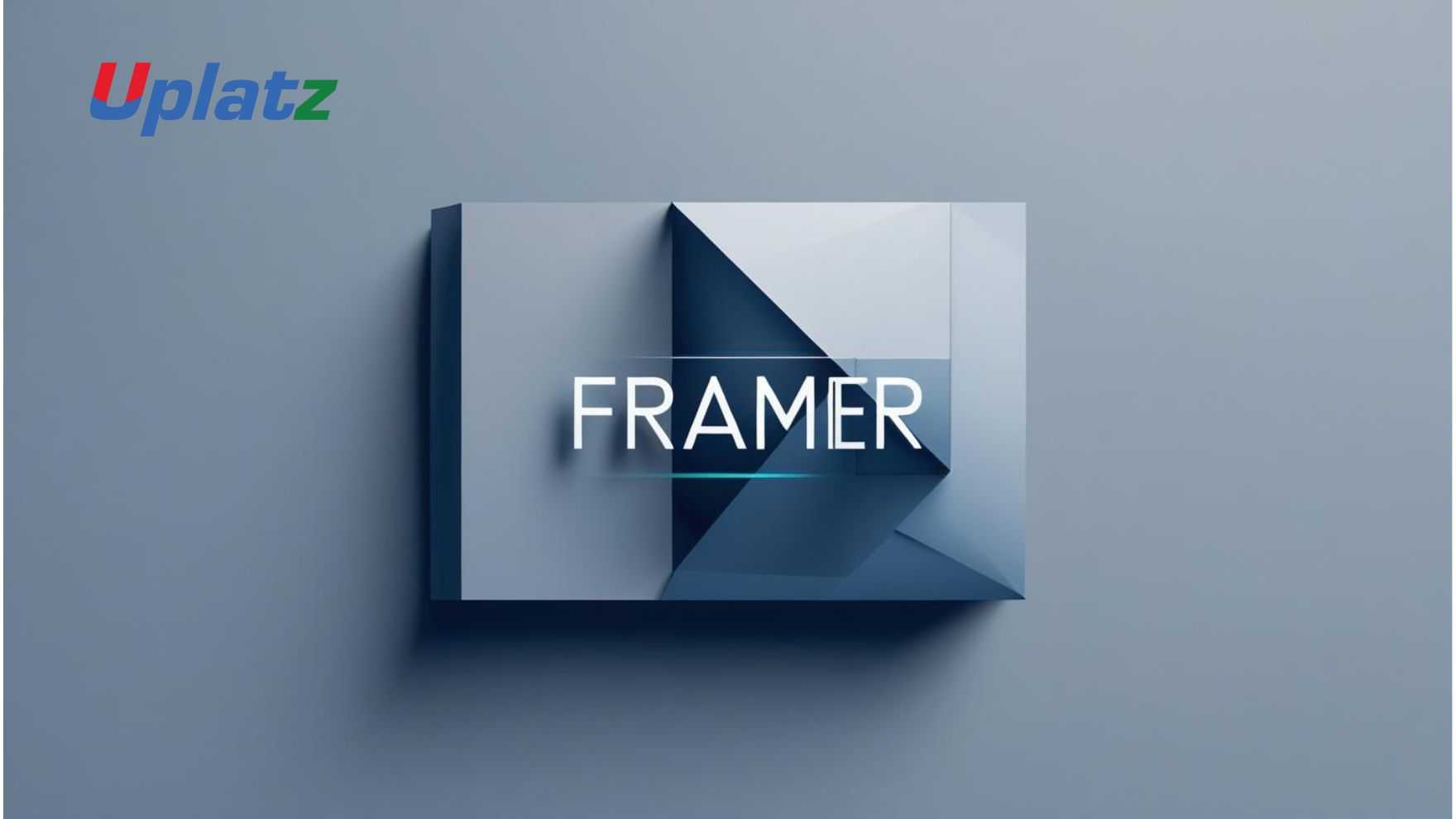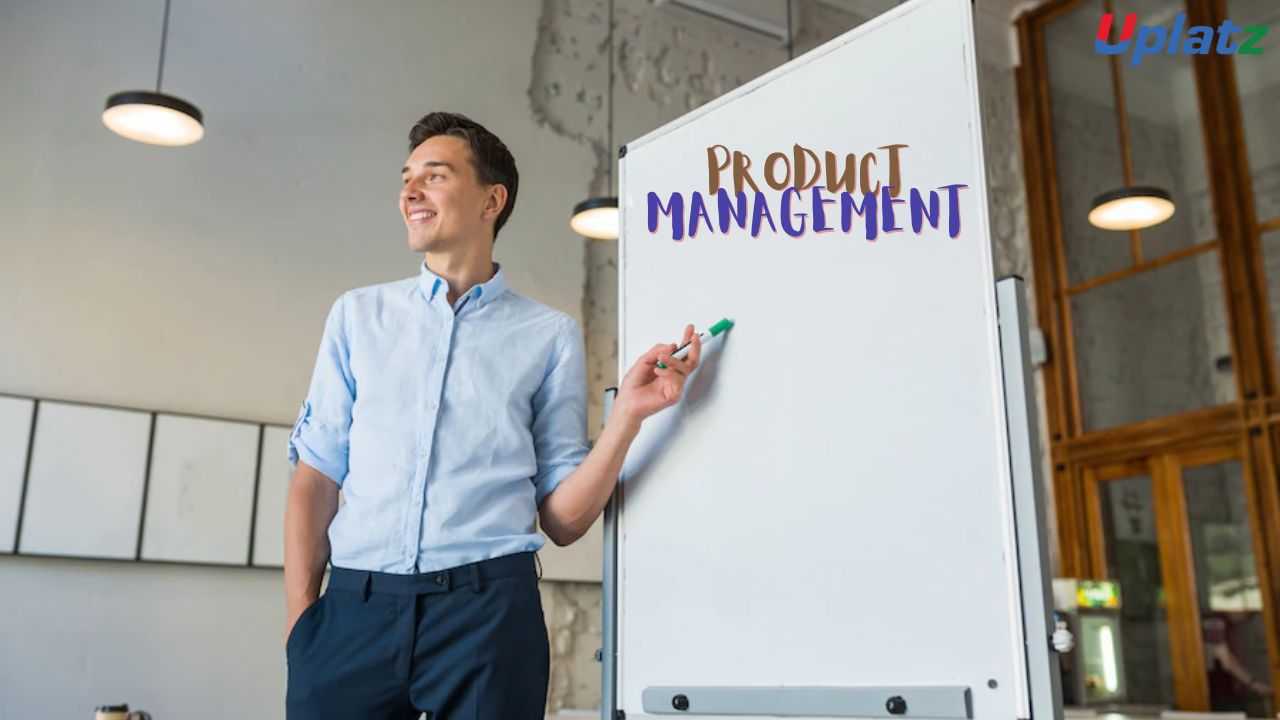Framer
Learn modern web design and prototyping with Framer to create interactive websites and prototypes—without needing extensive coding. Price Match Guarantee
Full Lifetime Access
Access on any Device
Technical Support
Secure Checkout
Course Completion Certificate
Price Match Guarantee
Full Lifetime Access
Access on any Device
Technical Support
Secure Checkout
Course Completion Certificate
 96% Started a new career
BUY THIS COURSE (GBP 29)
96% Started a new career
BUY THIS COURSE (GBP 29)
-
 86% Got a pay increase and promotion
86% Got a pay increase and promotion
Students also bought -
-

- Digital Marketing & SEO
- 80 Hours
- GBP 29
- 3327 Learners
-

- Product Management
- 2 Hours
- GBP 29
- 33 Learners
-

- Agile and Scrum
- 27 Hours
- GBP 29
- 880 Learners

Framer: Interactive Web Design & Prototyping is a comprehensive, self-paced course crafted for designers, developers, and entrepreneurs who aspire to design, prototype, and launch interactive websites efficiently. This course introduces learners to Framer’s unique blend of design flexibility and functional development, enabling them to create visually stunning projects without needing extensive coding knowledge. Whether you are a creative professional exploring new digital tools or a startup founder aiming to build a product prototype, this course equips you with the skills to bring your ideas to life quickly and effectively.
At its foundation, Framer is a revolutionary platform that bridges the gap between design and development. Unlike traditional design tools that focus solely on static mockups, Framer enables creators to produce fully interactive prototypes and production-ready websites in one seamless environment. Its no-code/low-code framework empowers users to design real interactions, animations, and transitions — while maintaining the option to extend projects with custom code when needed. This flexibility makes Framer a favorite among professionals who value both creative freedom and technical precision.
By integrating design and deployment capabilities, Framer eliminates the handoff gap that often slows down collaboration between designers and developers. Through this course, learners gain the ability to not only design prototypes but also publish and host their websites directly on Framer — making it a complete end-to-end design and web development solution.
Course Overview
This course provides a structured learning path that starts with Framer’s core interface and tools, gradually progressing to more advanced features and real-world project applications. Learners begin by exploring the design workspace — understanding artboards, layers, components, and responsive design principles that are essential for web and mobile experiences. Early modules focus on the fundamentals of visual design, including layout, typography, color, and grid systems, all within the Framer environment.
As learners advance, the course delves into interaction design and animation, guiding participants through creating smooth transitions, motion effects, and user-triggered interactions that bring interfaces to life. These skills are critical in modern product design, where motion and responsiveness enhance user engagement and usability.
The later sections of the course focus on prototyping and publishing, showing how learners can turn their static designs into interactive, clickable prototypes that behave like real websites or apps. Participants also learn to connect data, embed media, and utilize Framer’s component libraries to maintain consistency and reusability across projects.
A standout feature of this course is its emphasis on real-world projects. Learners will design and publish practical examples such as landing pages, product showcases, and personal portfolio websites. These projects not only reinforce technical skills but also help learners build a professional portfolio that demonstrates their ability to design and deploy interactive web experiences.
What You Will Gain
By completing this course, participants will develop a versatile set of skills applicable to UI/UX design, product development, and digital entrepreneurship. Specifically, learners will gain the ability to:
-
Design interactive websites and prototypes with Framer
Learn how to create responsive designs, use interactive elements, and design immersive user experiences without writing complex code. -
Build animations, transitions, and dynamic interactions
Understand motion design principles and apply them to create seamless interactions that enhance usability and visual storytelling. -
Create responsive layouts for web and mobile
Master adaptive design techniques to ensure your websites look and function perfectly across devices, from desktop to smartphone. -
Collaborate with teams in real time
Utilize Framer’s collaborative tools to work simultaneously with designers, developers, and clients, ensuring smooth communication and feedback loops. -
Publish and host websites directly from Framer
Learn how to take projects from prototype to live website using Framer’s built-in hosting and publishing features — eliminating the need for third-party platforms.
Each skill area is reinforced through guided exercises, practice challenges, and project-based learning activities that simulate real design scenarios. By the end of the course, learners will have the confidence to manage a complete design-to-deployment workflow.
Why Framer Stands Out
Framer is more than just a design tool; it’s a creative ecosystem that integrates design, prototyping, and web publishing in one environment. Traditional design software often requires multiple tools for layout design, prototyping, and web development — leading to time-consuming exports and technical inconsistencies. Framer simplifies this process by offering an all-in-one platform where everything from concept to deployment happens seamlessly.
Its real-time collaboration and browser-based design capabilities make it ideal for distributed teams working across different locations. Designers can instantly share prototypes with clients, while developers can access production-ready assets without additional handoff steps.
Furthermore, Framer’s no-code approach democratizes web design. Entrepreneurs and non-technical users can create professional-quality websites using pre-built components and responsive design frameworks, while experienced developers can extend functionality with custom React components and APIs. This flexibility ensures that Framer adapts to the needs of every user, regardless of technical expertise.
Course Approach and Learning Experience
The Framer: Interactive Web Design & Prototyping course follows an experiential, project-based learning model. Each module is structured around practical exercises, ensuring that learners gain hands-on experience with every concept introduced.
The course combines theoretical understanding of design principles with practical application in Framer’s workspace. Learners are guided through tasks such as creating animated buttons, dynamic navigation menus, responsive landing pages, and product prototypes. Alongside these exercises, they explore design system management, accessibility considerations, and strategies for optimizing performance on live websites.
The learning process emphasizes iteration and feedback, mirroring real-world design cycles. Learners are encouraged to experiment with different design styles, collaborate with peers, and test their prototypes on multiple devices. This approach not only develops technical proficiency but also cultivates creative problem-solving and design thinking.
By the end of the course, participants will have designed and published multiple live projects, showcasing their ability to use Framer both as a design tool and as a web deployment platform.
Who This Course Is For
This course is designed to meet the learning needs of a wide range of professionals and aspiring creators:
-
UI/UX Designers who want to go beyond static mockups and build interactive prototypes that closely resemble real products.
-
Web Designers looking for powerful no-code tools to create professional websites faster and more efficiently.
-
Entrepreneurs & Startups aiming to build and launch MVPs or marketing websites without hiring large technical teams.
-
Frontend Developers who wish to speed up their prototyping workflow and collaborate more effectively with design teams.
-
Students & Beginners entering the digital design and web development fields who want to acquire practical, industry-relevant skills.
Whether your goal is to design high-fidelity interfaces, test product ideas, or publish live sites, this course provides the skills and confidence needed to succeed in today’s fast-paced digital environment.
Career Relevance and Industry Impact
In the evolving world of digital design and web development, Framer has emerged as one of the most transformative tools for modern creators. Companies increasingly value professionals who can bridge the divide between design and deployment — and Framer skills do exactly that.
Mastering Framer allows learners to work in diverse roles such as UI/UX Designer, Product Designer, Web Developer, or Creative Technologist. It also empowers freelancers and startups to produce high-quality websites independently, without relying on extensive technical teams or external developers.
By completing this course, learners position themselves at the forefront of interactive design and no-code web development — two of the most in-demand skill areas in the creative and tech industries today. Framer expertise demonstrates not only design capability but also adaptability, innovation, and a forward-thinking approach to building digital experiences.
By the end of this course, you will be able to:
-
Navigate Framer’s interface and tools
-
Build interactive prototypes with animations and transitions
-
Create responsive, mobile-friendly layouts
-
Develop reusable components and design systems
-
Publish fully functional websites directly from Framer
Course Syllabus
Module 1: Introduction to Framer
Module 2: Creating Your First Project
Module 3: Layouts & Responsive Design
Module 4: Components & Design Systems
Module 5: Animations & Interactions
Module 6: Prototyping User Flows
Module 7: Collaboration & Team Workflows
Module 8: Publishing & Hosting with Framer
Module 9: Real-World Projects (Portfolio Site, Landing Page, App Prototype)
Module 10: Interview Questions & Answers
Upon completion, learners will receive a Certificate of Completion from Uplatz validating their expertise in interactive web design and prototyping with Framer.
This course prepares learners for roles such as:
-
UI/UX Designer
-
Web Designer
-
Product Designer
-
Interaction Designer
-
Frontend Developer (with prototyping skills)
-
What is Framer and how does it differ from Figma?
Answer: Figma is mainly for design and prototyping, while Framer allows direct publishing of interactive websites, combining design with deployment. -
What are the main uses of Framer?
Answer: Framer is used for prototyping, designing landing pages, creating animations, and publishing production-ready websites. -
What is the advantage of using Framer over traditional coding?
Answer: Framer offers no-code/low-code solutions, speeding up prototyping and allowing non-developers to create functional sites. -
Can Framer be integrated with other tools?
Answer: Yes, Framer integrates with Figma, Google Fonts, analytics tools, and custom code snippets. -
How does Framer handle responsive design?
Answer: It uses flexible layouts, constraints, and breakpoints to ensure designs adapt to different screen sizes. -
What are Framer components?
Answer: Components are reusable elements like buttons, navigation bars, or cards that maintain consistency across designs. -
How does collaboration work in Framer?
Answer: Teams can work together in real time, leave comments, and edit projects simultaneously—similar to Figma. -
Can Framer be used to host live websites?
Answer: Yes, Framer allows direct publishing of websites with hosting, custom domains, and SEO support. -
What limitations does Framer have?
Answer: It may not support very complex backend functionality, and performance can depend on internet connectivity. -
How would you use Framer as a startup founder?
Answer: To quickly design and launch marketing websites, validate MVPs, and iterate prototypes with real user feedback.









